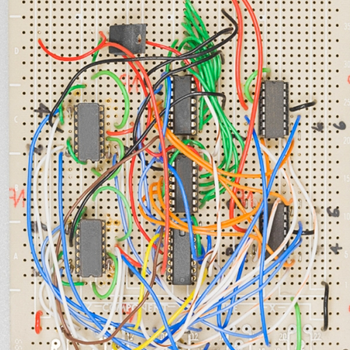The IR spectrum shows a peak at "1720 cm"^(-1), and the ""^(1) "H" "NMR" shows a doublet near "1.10 ppm", a singlet at "2.10 ppm", and a septet at "2.50 ppm". What is the compound?
1 Answer
The compound is 3-methyl-2-butanone.
Explanation:
To begin with the IR-abosorption,
The molecule of
Then, let's proceed to the NMR spectrum.
[1] A peak near
[2] A peak at
[3] The fact that the peak at
Therefore, the structure will be
 )
)
Let's check the answer:
 )
)
Here is a chemical shift table.(PDF)
https://staff.aub.edu.lb/~tg02/nmrchart.pdf#search=%27proton+NMR+table%27

